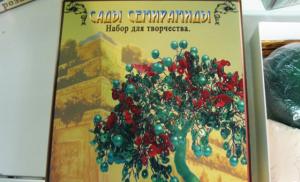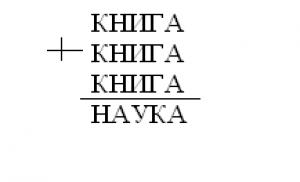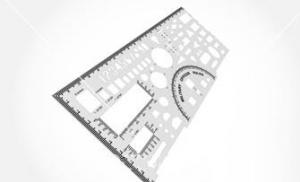"Vitruvian Man" by Leonardo da Vinci. Leonardo Da Vinci
Leonard Da Vinci's Vitruvian Man is an amazing drawing known all over the world.
Drawn by a famous thinker and figure of his time, he still causes a lot of controversy and questions.
Scientists have been considering it for many years under different angles, trying to understand and delve into the sketch, but it is still believed that not all of its features have been found, and moreover, far from all the secrets have been solved.
History of occurrence
The famous sketch was born back in 1492. Few people know, but the Vitruvian Man is an illustration of a famous handwritten work of no less famous architect Vitruvius, but was intended for Da Vinci's diary, called "The Canon of Proportions".
The pencil sketch is a successful attempt to convey the truths of the great architect. Vitruvius compared the proportions of the human body with the architecture of buildings, he was sure that the proportions of the human body are constant and easy to calculate. It was thanks to his work and Da Vinci's illustration that the proportionality scale was invented.
To date, the drawing is stored in the Venice Museum. Exhibited as a unique exhibit very rarely (once every six months). It has the greatest historical value, for this reason, the rest of the time only a narrow circle of scientists can see it.
Peculiarities
Why is Vitruvian Man so interesting? There are many drawings famous personalities, including many other works by Leonardo Da Vinci, so why is this one so popular? Everything is quite simple - his fame is directly related to the mystery. Leonardo believed in the unique number "phi" due to which everything in nature is created.
Throughout his life, he tried to apply or use this proportion in architecture. Vitruvian man was created according to all the canons of the number "phi" - this is an ideal creature. The figure shows a naked man with ideal body proportions in two different positions superimposed on each other.
A person is inscribed simultaneously in a circle and a square. A figure with legs together and arms apart stands in a square, and with arms and legs apart, in a circle. center of various geometric shapes are different points human body. In the case of a circle, this is the navel, and in the case of a square, the genitals.
To some extent, the problem of unraveling the sketch lies in the fact that it can be viewed from different angles: spiritual, mathematical, philosophical, symbolic, and so on. In each individual case, there are all new features that excite the minds of modern scientists.
- Often a drawing is used as a kind of canon of internal and external symmetry in various sciences: mathematics, symbolism, teachings about the universe and the universe;
- Sketch, unlike many famous works the author was made personally for Leonardo, and not for show. It was kept in his diaries and used for his own research;
- To date, the work causes a lot of controversy, primarily because of Giacomo Andrea de Ferrar. Many believe that Leonardo's drawing is only a copy of Giacomo, others are sure that the sketch was drawn by both of them;
- Hidden meaning scientists see a sketch not only in a person, but also in a circle and a square, but they have not yet been able to unravel it;
- In the figure, there are not two poses of a person, but 16, although at first glance this cannot be said;
- Whether there was a model with which Leonardo or Vitruvian man painted - fantasy is still unknown. The only opinion that remains is that the image conveys the ideal of the human body and proportions from the point of view of the author.
Leonardo da Vinci and his Vitruvian Man.
The Vitruvian Man is a drawing made by Leonardo Da Vinci around 1490-1492 as an illustration for a book dedicated to the works of Vitruvius. The drawing is accompanied by explanatory inscriptions in one of his journals. It depicts the figure of a naked man in two superimposed positions: with arms outstretched to the sides, describing a circle and a square. Drawing and text are sometimes referred to as canonical proportions.
1. Leonardo never intended to flaunt his "Vitruvian Man"
Leonardo da Vinci.
The sketch was discovered in one of the Renaissance master's personal notebooks. In fact, Leonardo drew a sketch for his own research and did not even suspect that he would someday be admired. However, Vitruvian Man is one of the artist's most famous works today, along with The Last Supper and Mona Lisa.
2. Combination of art and science

Being a true representative of the Renaissance, Leonardo was not only a painter, sculptor and writer, but also an inventor, architect, engineer, mathematician and an expert in anatomy. This ink drawing was the result of Leonardo's study of theories about human proportions described by the ancient Roman architect Vitruvius.
3. Leonardo wasn't the first to try to illustrate Vitruvius' theories

As modern scholars believe, there were many people in the 15th century and subsequent decades who tried to capture this idea in visual form.
4. Perhaps the drawing was made not only by Leonardo himself

In 2012, the Italian architectural historian Claudio Sgarbi published findings that Leonardo's study of human body proportions was prompted by a similar study done by his friend and fellow architect Giacomo Andrea de Ferrara. It is still unclear if they worked together. Even if this theory is incorrect, historians agree that Leonardo perfected the shortcomings of Giacomo's work.
5. The circle and the square have their own hidden meaning.

In their mathematical studies, Vitruvius and Leonardo described not only the proportions of man, but also the proportions of the entire creation. AT notebook In 1492 Leonardo's entry was found: " ancient man was the world in miniature. Since man is made up of earth, water, air and fire, his body resembles a microcosm of the universe."
6. "Vitruvian Man" is just one of many sketches

In order to improve his art and better understand how the world around him works, Leonardo painted many people in order to get an idea of \u200b\u200bideal proportions.
7. Vitruvian man - the ideal of a man

Who served as a model will remain a mystery, but art historians believe that Leonardo took some liberties in his drawing. This work was not so much a portrait as a conscientious depiction of ideal male forms from the point of view of mathematics.
8. It could be a self-portrait

Since no descriptions of the model from which this sketch was drawn have been preserved, some art historians believe that Leonardo painted the Vitruvian Man from himself.
9 Vitruvian Man Had A Hernia

Khutan Ashrafyan, a surgeon at Imperial College London, 521 years after the creation of the famous drawing, established that the person depicted in the sketch had an inguinal hernia, which could lead to his death.
10. To understand the full meaning of the picture, you need to read the notes to it.

When the sketch was originally discovered in Lernardo's notebook, next to it were the artist's notes on human proportions, which read: "The architect Vitruvius states in his work on architecture that the measurements of the human body are distributed according to the following principle: the width of 4 fingers is equal to 1 is 4 palms, the elbow is 6 palms, full height a person - 4 cubits or 24 palms ... Vitruvius used the same measurements in the construction of his buildings.
11. The body is lined with measured lines

If you look closely at the chest, arms and face of a person in the drawing, you can see straight lines that mark the proportions that Leonardo wrote about in his notes. For example, the part of the face from the bottom of the nose to the eyebrows is a third of the face, as is the part of the face from the bottom of the nose to the chin and from the eyebrows to the line where the hair begins to grow.
12. The sketch has other, less esoteric names.

The sketch is also called "The Canon of Proportions" or "The Proportions of a Man".
13. The Vitruvian Man does 16 poses at the same time.

At first glance, only two poses can be seen: standing man, who moved his legs and spread his arms, and a standing man with legs apart and arms raised. But part of the genius of Leonardo's depiction is that 16 poses are depicted simultaneously in one drawing.
14. Leonardo da Vinci's creation was used to represent the problems of our time.

Irish artist John Quigley used an iconic image to illustrate the problem global warming. To do this, he depicted a multiply enlarged copy of the Vitruvian Man on the ice in the Arctic Ocean.
15. The original sketch is rarely seen in public.

Copies can be found literally everywhere, but the original is too fragile to be displayed in public. The Vitruvian Man is usually kept under lock and key in the Accademia Gallery in Venice.
Leonardo da Vinci
Vitruvian Man
The golden ratio in art
There is an opinion that a true creator does not create art himself, but allows God or energy (as you like) to direct the brush, merging into a single whole and totally turning into the mystery of creativity.
Little is known about Leonardo da Vinci as a person. There is much more information about him as a mystic, capable of uniting with the whole. His creations in various fields of knowledge and arts say more about him than he himself or those who knew him well could tell. The materials of his works that have come down to us testify to the disclosure of the fundamental principles of beauty by him.
The Vitruvian Man is an illustration of the writings of the ancient Roman architect Vitruvius, made by Leonardo da Vinci around 1490-92 in his journal, along with explanations. The figure shows the figure of a naked man in two superimposed poses with arms and legs spread apart, inscribed in a circle and a square.
Combinations of arms and legs make up four poses. A pose with arms spread apart in two positions and legs not spread apart fits into a square, the so-called "Square of the Ancients". Two more poses with arms and legs spread out to the sides, fits into a circle. The center of the figure always remains fixed.
"Vetruvio architetto mette nelle sue opera d'architettura che le misure dell'omo..."“The architect Vetruvius laid the dimensions of man in his architecture ...”
The accompanying notes of Leonardo da Vinci explain that the drawing was created by him to study the proportions of the human body, as described in the treatises of the ancient Roman architect Vitruvius, who wrote the following about the human body:
“Nature disposed of the following proportions in the structure of the human body:  the length of four fingers is equal to the length of the palm,
the length of four fingers is equal to the length of the palm,
four palms are equal to a foot,
six hands make one cubit,
four cubits is the height of a man.
Four cubits are equal to a step, and twenty-four palms are equal to the height of a man.
If you spread your legs so that the distance between them is 1/14 of a human height, and raise your hands so that the middle fingers are at the level of the top of the head, then the center point of the body, equidistant from all limbs, will be your navel.
The space between the legs apart and the floor forms an equilateral triangle.
The length of the outstretched arms will be equal to the height.
The distance from the roots of the hair to the tip of the chin is equal to one tenth of human height.
The distance from the top of the chest to the top of the head is 1/6 of the height.
The distance from the upper chest to the roots of the hair is 1/7.
The distance from the nipples to the crown is exactly a quarter of the height.
The greatest width of the shoulders is an eighth of the height.
The distance from the elbow to the fingertips is 1/5 of the height, from the elbow to the armpit is 1/8.
The length of the entire arm is 1/10 of the height.
The beginning of the genitals is located just in the middle of the body.
Foot - 1/7 of the height.
The distance from the toe of the foot to the patella is equal to a quarter of the height, and the distance from the patella to the beginning of the genitals is also equal to a quarter of the height.
The distance from the tip of the chin to the nose and from the roots of the hair to the eyebrows will be the same and, like the length of the ear, equal to 1/3 of the face.
Meaning of the Vitruvian Man
"Everything new is a well-forgotten old" - says famous saying. The “resurrection” of the mathematical proportions of the human body from antiquity, made by Leonardo da Vinci in the 15th century, became the foundation of the great achievements that preceded Italian Renaissance. Vitruvian man in itself is a symbol of internal symmetry and natural harmony of the human body.
Any divine manifestation, including art, is inherent in the desire for harmony, proportion, harmony - for such a harmonious state of being, which we used to call beauty. Being ourselves part of the universal energy of beauty, we unmistakably distinguish one from the other. Ugly immediately catches the eye.
We find beauty in the proportions of architecture and sculpture, in the arrangement of surrounding objects and forms, in the combination of colors in paintings, in the alternation of rhymes and rhythm in poetry, in the combinations, sequences and gravity of musical sounds.
 In nature and the human body, there are many proportional harmonious relationships close to the golden ratio of Leonardo da Vinci. However, golden ratio is not the only relation visually perceived as beautiful. These include relationships such as 1:2, 1:3. They are also close to the golden ratio.
In nature and the human body, there are many proportional harmonious relationships close to the golden ratio of Leonardo da Vinci. However, golden ratio is not the only relation visually perceived as beautiful. These include relationships such as 1:2, 1:3. They are also close to the golden ratio.
 In any work of art, several unequal, but close to the golden section, parts give the impression of the development of forms, their dynamics, proportional addition to each other. This property is used everywhere and has long been called "canonical proportions".
In any work of art, several unequal, but close to the golden section, parts give the impression of the development of forms, their dynamics, proportional addition to each other. This property is used everywhere and has long been called "canonical proportions".
Each person is able to distinguish the beautiful from the ugly. For example, if he sees a house or some other structure that is not sustained in the proportions of the golden section, then it immediately becomes obvious that "something is wrong with it." Something is embarrassing. This landmark of harmony and a sense of beauty is in everyone.

 "All art strives to become music." (Walter Pater)
"All art strives to become music." (Walter Pater)
"The greatness of art is most clearly manifested in music." (Johann Wolfgang Goethe)
How to determine the presence of the golden ratio in something that does not have material forms, such as music? How to "measure" musical composition by beauty?
In music, the golden ratio reflects the peculiarities of human perception of time proportions. The point of the golden section serves as a reference point in the time of the sound of the work and often the culmination falls on it. Or it can be the brightest accent or the quietest “kachum”, the densest and most instrumental sounding place or the highest pitch, or the place where the crescendo ends, the change of rhythm.
It often happens that a new musical theme appears at the point of the golden ratio.
And as Frank Zappa said, "Talking about music is like dancing about architecture."
Listen...
listen good beautiful music and realize your beauty. Let the music reflect the beauty of the golden ratio of your being. Let there be goosebumps!
Where the music begins, thoughts disappear, the observer and the awareness of beauty appear (unless, of course, you listen to music, and do not use it as white noise as a background).
And the next time you listen to music, pay attention to what you are doing: listening or thinking. Just think of Leonardo.
No related posts.
Vitruvian Man
Vitruvian Man is now a pop culture idol – you can see him on posters, in advertisements, on T-shirts and bags.
This drawing was created by Leonardo in the early 1490s. In fact, this is an illustration of the works of the Roman scientist Vitruvius, and it was preserved in one of Leonardo's diaries. She is sometimes referred to as "Leonardo's perfect man". These are figures of a naked man superimposed on each other, ideal in proportion. One figure (with legs brought together and arms outstretched) is inscribed in a square, and a figure with outstretched arms and legs apart touches at four points of the circle.
The Vitruvian Man is an illustration of the canonical (ideal) proportions of the human figure.
Leonardo da Vinci. Vitruvian Man. Pen, ink, metal needle. Academy Gallery. Venice. The figure illustrates the proportions of the ideal human body.
The Roman architect Vitruvius left ten books on architecture, in which he collected and expounded almost all the knowledge of Antiquity in this area. In the first chapter of the third book, he wrote down the proportions of the human (male) body, which corresponded to the ideals of Antiquity. Here they are:
the length from the tip of the longest to the lowest base of the four fingers is equal to the palm;
the foot is four palms;
a cubit is six palms;
the height of a man is four cubits from the tips of the fingers (and, accordingly, 24 palms);
a step is equal to four palms;
scope human hands equal to his height;
the distance from the hairline to the chin is 1/10 of its height;
the distance from the top of the head to the chin is 1/8 of its height;
the distance from the crown to the nipples is 1/4 of its height;
the maximum width of the shoulders is 1/4 of its height;
the distance from the elbow to the tip of the arm is 1/4 of its height;
the distance from the elbow to the armpit is 1/8 of its height;
the length of the arm is 2/5 of its height;
the distance from chin to nose is 1/3 of the length of his face;
the distance from the hairline to the eyebrows is 1/3 the length of his face;
the length of the ears is 1/3 the length of the face;
the navel is the center of the circle.
Leonardo actually rediscovered these proportions.
“Man is the model of the world,” Leonardo said. And the Vitruvian Man became the symbol of this model. By the way, we must remember that these are the proportions of an adult body - in a child they are completely different.
As a child, it seemed to me that Leonardo's perfect man was a man with four arms and four legs, capable of doing twice as much as usual. This is not a perfect, but an improved person. Maybe this is how Leonardo saw himself - capable of something that no one can do?
From the book of Charlemagne author Levandovsky Anatoly PetrovichMan In the year 800 he was fifty-eight years old. Being at the zenith of fame, he was in the prime of life and health. The legend has forever preserved the image of a majestic old man with a huge white beard, dressed in a magnificent robe, topped with a golden crown, with
From the book The Tale of the Experience the author Dyakov BorisThe man himself ... "How quickly the day passes and how long the year lasts!" - I confessed in a postcard, which I managed to send home in excess of the norm. A day later, Emir brought me twelve letters. The postcard went with them. Vera wrote: “A day without you is like a year. And the years run, run away.
From the book Vernadsky: life, thought, immortality author Balandin Rudolf KonstantinovichMAN In mineralogy, it is customary to mention the practical significance of a particular mineral in economic activity. Vernadsky also wrote about this in his mineralogical works. He did it in a special way. “I try to find out the significance of man in the genesis of minerals. These
From the book About myself, about people, about films author Romm Mikhail IlyichMan No. 217 In the spring of 1943 I came to Moscow to arrange my next production. In Moscow at that time, the restoration of Mosfilm was already beginning. Some kind of concert was filmed, a production of "Kutuzov" was planned, paintings by Gerasimov, paintings
From the book Diary by Peeps Samuel3. THE MAN'S HOUSE AND NEIGHBORS This morning, finding that some things were not where they belong, he grabbed a broom and began to beat the maid until she screamed all over the house, which annoyed me greatly. December 1, 1660 At lunch and dinner I, I don't know why, drank
From the book Passion for Tchaikovsky. Conversations with George Balanchine author Volkov Solomon MoiseevichMan Balanchine: Tchaikovsky the man and Tchaikovsky the musician are, in my opinion, exactly the same, one and the same. You cannot share them. Tchaikovsky thought about music all the time. But of course, he was an extremely well-mannered person and did not show the guests: I'm busy, leave me alone.
From the book Rate - life. Vladimir Mayakovsky and his circle. author Jangfeldt BengtMan During the period of the most intense activity of "cafe-futurism", in February 1918, Mayakovsky published new poem"Man" in the publishing house ASIS (Association socialist art) with the money of friends, in particular Lev Greenkrug. Simultaneously in the same publishing house
From the book One on the Bridge: Poems. Memories. Letters author Andersen Larissa NikolaevnaTHAT MAN Again I woke up so early And got up on the wrong foot! No, I'm not sick, but strange - Everything seems different to me. And the wind makes a different noise, And the poplar knocks on the door, And someone in the fireplace is crying, Whining and growling like a beast... No, we don't have to go out! Let's lock the key. Look,
From the book Prison and Freedom author Khodorkovsky MikhailMan or Man-Computer The prison undoubtedly changed me personally, despite the fact that I got here as an adult and a well-established person. The understanding of the importance of relationships with loved ones and family has undergone the strongest reassessment. And understanding the world
From the book Foremen of the Spirit author Voznesensky Andrey AndreevichMan Man changes skin, my God! - and the jaw too, it changes the blood and the heart. Someone's pain will settle in him? A person changes his head for Bogomolov's textbook, he changes his year of birth, he changes his beliefs for an office in an institution. Friend, let's wave - help! I'll give you brains in three
From the book Collected Works. T.25. From the collections: "Naturalism in the theater", "Our playwrights", "Natural novelists", "Literary documents" author Zola Emile From the book Home, dinner and bed. From a diary by Peeps Samuel From the book Memory of a Dream [Poems and Translations] author Puchkova Elena OlegovnaMan Of course, he can be better than you, The portrait you created, And the sculpture that you sculpted, Maybe better than you, Can be taller And more beautiful than the original. If you wrote poems, They can say more than you would say in a conversation. And of course,
From the book of the Rosary author Saidov Golib"Our man" Two months passed before I realized that I should either urgently change my job, or - I'll go crazy and it's time to send me to the "fool". And there are plenty of reasons for this. Firstly, the resilience and obstinacy of the Arab tribesmen was amazing,
From the book Li Bo: The Earthly Destiny of the Celestial author Toroptsev Sergey ArkadievichThe Shu Man In Historical Chronicles " A new book[about the dynasty] Tang” mentions the appearance of “descendants of the sacred Yellow Lord” (Huangdi) in the “Western Territory”, from where they “at the beginning of the Shenlong period” moved to Western Ba (part of modern Sichuan province), where
From Diderot's book author Akimova Alisa AkimovnaX Man You always come back to your favorite thoughts. Diderot several times in Rameau's Nephew, in the Paradox of the Actor, in a conversation with Urania - Madame Legendre, in a letter to Sophie developed the idea that of the two Racines he would not choose Racine - a good father, a good husband,
15 little known facts about the "Vitruvian Man" by Leonardo da Vinci
The Vitruvian Man is a drawing made by Leonardo Da Vinci around 1490-1492 as an illustration for a book dedicated to the works of Vitruvius. The drawing is accompanied by explanatory inscriptions in one of his journals. It depicts the figure of a naked man in two superimposed positions: with arms outstretched to the sides, describing a circle and a square. Drawing and text are sometimes referred to as canonical proportions.
1. Leonardo never intended to flaunt his "Vitruvian Man"

The sketch was discovered in one of the Renaissance master's personal notebooks. In fact, Leonardo drew a sketch for his own research and did not even suspect that he would someday be admired. However, Vitruvian Man is one of the artist's most famous works today, along with The Last Supper and Mona Lisa.
2. Combination of art and science

Being a true representative of the Renaissance, Leonardo was not only a painter, sculptor and writer, but also an inventor, architect, engineer, mathematician and an expert in anatomy. This ink drawing was the result of Leonardo's study of the theories of human proportions described by the ancient Roman architect Vitruvius.
3. Leonardo wasn't the first to try to illustrate Vitruvius' theories

As modern scholars believe, there were many people in the 15th century and subsequent decades who tried to capture this idea in visual form.
4. Perhaps the drawing was made not only by Leonardo himself

In 2012, the Italian architectural historian Claudio Sgarbi published findings that Leonardo's study of human body proportions was prompted by a similar study done by his friend and fellow architect Giacomo Andrea de Ferrara. It is still unclear if they worked together. Even if this theory is incorrect, historians agree that Leonardo perfected the shortcomings of Giacomo's work.
5. The circle and the square have their own hidden meaning.

In their mathematical studies, Vitruvius and Leonardo described not only the proportions of man, but also the proportions of the entire creation. In a notebook of 1492, Leonardo's entry was found: “Ancient man was the world in miniature. Since man is made up of earth, water, air and fire, his body resembles a microcosm of the universe."
6. "Vitruvian Man" is just one of many sketches

In order to improve his art and better understand how the world around him works, Leonardo painted many people in order to get an idea of \u200b\u200bideal proportions.
7. Vitruvian man - the ideal of a man

Who served as a model will remain a mystery, but art historians believe that Leonardo took some liberties in his drawing. This work was not so much a portrait as a conscientious depiction of ideal male forms from the point of view of mathematics.
8. It could be a self-portrait

Since no descriptions of the model from which this sketch was drawn have been preserved, some art historians believe that Leonardo painted the Vitruvian Man from himself.
9 Vitruvian Man Had A Hernia

Khutan Ashrafyan, a surgeon at Imperial College London, 521 years after the creation of the famous drawing, established that the person depicted in the sketch had an inguinal hernia, which could lead to his death.
10. To understand the full meaning of the picture, you need to read the notes to it.

When the sketch was originally discovered in Lernardo's notebook, next to it were the artist's notes on human proportions, which read: "The architect Vitruvius states in his work on architecture that the measurements of the human body are distributed according to the following principle: the width of 4 fingers is equal to 1 is 4 palms, a cubit is 6 palms, the full height of a person is 4 cubits or 24 palms ... Vitruvius used the same measurements in the construction of his buildings.
11. The body is lined with measured lines

If you look closely at the chest, arms and face of a person in the drawing, you can see straight lines that mark the proportions that Leonardo wrote about in his notes. For example, the part of the face from the bottom of the nose to the eyebrows is a third of the face, as is the part of the face from the bottom of the nose to the chin and from the eyebrows to the line where the hair begins to grow.
12. The sketch has other, less esoteric names.

The sketch is also called "The Canon of Proportions" or "The Proportions of a Man".
13. The Vitruvian Man does 16 poses at the same time.

At first glance, only two poses can be seen: a standing person who has moved his legs and spread his arms, and a standing person with legs apart and arms raised. But part of the genius of Leonardo's depiction is that 16 poses are depicted simultaneously in one drawing.
14. Leonardo da Vinci's creation was used to represent the problems of our time.

Irish artist John Quigley used an iconic image to illustrate the problem of global warming. To do this, he depicted a multiply enlarged copy of the Vitruvian Man on the ice in the Arctic Ocean.
15. The original sketch is rarely seen in public.

Copies can be found literally everywhere, but the original is too fragile to be displayed in public. The Vitruvian Man is usually kept under lock and key in the Accademia Gallery in Venice.













